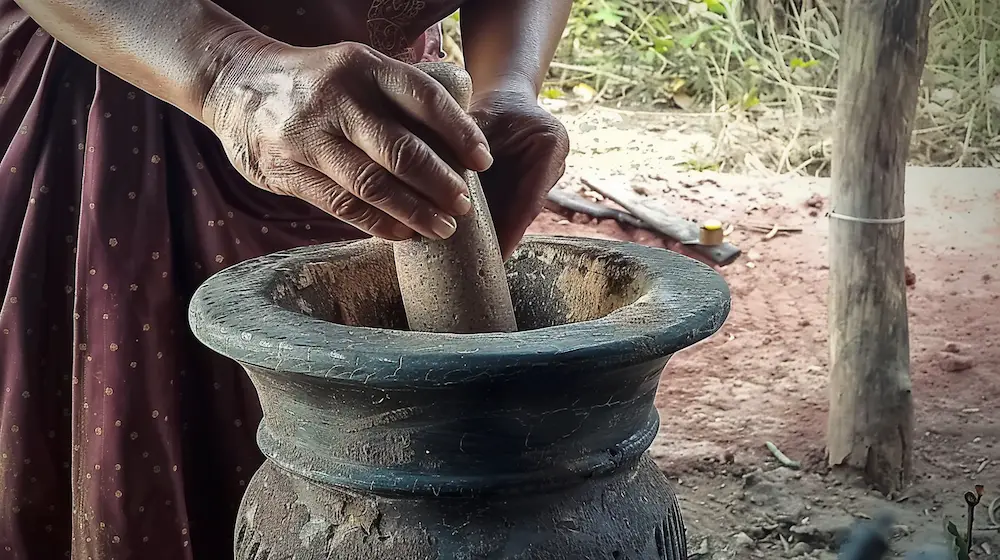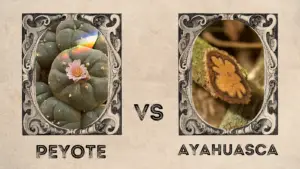Learn to make your own rapé this April 2024 at our upcoming 7-day women’s plant medicine retreat. We will be joined by a medicine woman from Brazil, carrier and maker of sacred rapé medicine – she will be showing us the step-by-step process to prepare rapé medicine.
Creating your own Amazonian rapé medicine at home is a simple process that requires dried rustica tobacco and ashes. By grinding the tobacco and mixing it with ashes, you can replicate the traditional recipe and experience the distinctive qualities of this sacred snuff. While commercial varieties of rape may come with a hefty price tag, making it at home is a cost-effective and rewarding alternative, not to mention the special connection you create with the sacred medicine of tobacco.

Step-by-Step Guide: How to Make Rapé Medicine
Rapé medicine, used traditionally by indigenous cultures for its healing properties, can be made with simple ingredients and careful preparation. Follow these steps to create your own high-quality rapé at home.
Materials Needed:
- Tobacco leaves (preferably high-quality and organic)
- Ash (from sacred plants like pau pereira or ash tree)
- Knife or scissors
- Grinding tool (e.g., wooden grinder)
- Sealed container for storage
- Optional: Silk screen with 60-80 threads per square centimeter for sifting
Instructions:
1. Selecting Ingredients:
- Choose high-quality tobacco leaves, preferably organic and free from pesticides or chemicals.
- Obtain ash from sacred plants like pau pereira or ash tree, ensuring it’s finely ground and free from impurities.
2. Preparing Tobacco Leaves:
- Cut the tobacco leaves into smaller pieces using a knife or scissors, ensuring careful handling to avoid injury.
3. Sun Drying:
- Lay out the tobacco leaves in a single layer under direct sunlight for dehydration. This process may take several days depending on weather conditions.
4. Grinding Tobacco:
- Once dried, grind the tobacco leaves using a wooden grinder, mortar and pestle, or similar tool. Take care to crush the leaves evenly to achieve a fine consistency.
5. Mixing with Ash:
- In a separate container, mix the ground tobacco with a small amount of ash. The ratio of tobacco to ash can vary based on personal preference, but ensure there’s enough ash to balance the mixture.
6. Grinding Again (Optional):
- If necessary, grind the mixture again to ensure thorough incorporation of the ash and to achieve the desired consistency.
7. Sieving (Optional):
- For a finer texture, sift the mixture through a silk screen with 60-80 threads per square centimeter. This step helps remove any remaining coarse particles, resulting in smoother rapé.
8. Storing Rapé:
- Transfer the finished rapé mixture into a sealed container to prevent moisture absorption. Store it in a cool, dry place away from direct sunlight.
9. Prayers and Intentions:
- Throughout the process, offer prayers and intentions for healing, health, and well-being, infusing the rapé with positive energy and intentions.
10. Testing and Adjusting:
- Before use, test a small amount of rapé to ensure the desired potency and flavor. Adjust the ratio of tobacco to ash accordingly for future batches.
11. Enjoying Rapé:
- Rapé can be used ceremonially or for personal healing rituals. Take a small amount on the palm of your hand, gently inhale through the nose, and exhale slowly.
12. Sharing and Connecting:
- Share your homemade rapé with others who may benefit from its healing properties, fostering connection and community.
Final Note: Making rapé medicine is a sacred and mindful process that requires respect for the plants and traditions involved. Approach the process with intention, gratitude, and reverence for the wisdom of indigenous cultures. Experiment with different ingredients and ratios to find a rapé blend that resonates with your personal preferences and intentions.
What is Rapé made of?
Rapé, a type of smokeless tobacco originating from South America, is a blend of nicotine-enriched tobacco mixed with various non-tobacco ingredients. The core component of most Rapé snuffs is Nicotiana rustica, a tobacco species found in the Amazon. This fine, ground-up shamanic snuff typically contains Nicotiana Rustica, also known as mapacho, which is a potent type of tobacco used in its preparation. Additionally, Rapé may include other Amazonian plants, making it a diverse mixture with both tobacco and non-tobacco elements. Ayurvedic ingredients are also sometimes incorporated into the production of Rapé, adding to its complexity and potency.
What are the different types of Hape?
As mentioned earlier, Hapé, also known as rapé or rapeh, is sacred Amazonian snuff made from powdered medicinal herbs, usually including tobacco, used by Amazonian tribes since pre-Columbian times. There are various types and blends of Hapé available, each with unique properties and effects
- Common Types of Hapé (some of these are commercial names)
-
- Huni Kuin Cacau Hapé: Known for its grounding character and strength, blended with ashes from wild natural cacao grown in the Amazon.
-
- Huni Kuin Murici Hapé: An everyday blend suitable for general use, made from organic tobacco and murici ashes.
-
- Yawanawa Tsunu Bullet: A strong blend for advanced practitioners, aligning and clearing unwanted energies.
-
- Huni Kuin Immunity Warrior: Traditional recipe for physical strength, made with tobacco and murici ashes.
-
- Shawadawa Rawaputu Spiritual Connection: Used against mental disturbance and tiredness, enhancing spiritual connection.
-
- Kuntanawa Kapaxanba Grounding: Made with cacao bean ashes and moi tobacco for courage and joy.
-
- Munay Cura Canela de Velho: Contains a relative of cinnamon for digestion and central energy channel work.
-
- Kuntanawa Mint Dream: Refreshing blend with organic moi tobacco, sapota ashes, and Peruvian mint.
-
- Katukina Eucalyptus Breath of Life: Cleansing blend with eucalyptus for respiratory health.
-
- Shanenawa Caneleiro Harmony: Balancing blend with smoother tobacco for energetic recalibration.
These types of Hapé are crafted by different tribes like the Huni Kuin, Yawanawa, Shawadawa, Kuntanawa, Nukini, Katukina, among others, each tribe having its unique recipes and preparation methods
The diversity in ingredients and blends offers a wide range of experiences from calming states to visionary effects, catering to various preferences and intentions.
For those interested in exploring the world of Hapé, understanding the different types available can guide individuals in selecting blends that align with their needs and desired experiences.
Non-Tobacco Ingredients in Rapé
Rapé, a type of smokeless tobacco originating from South America, contains a variety of non-tobacco ingredients that contribute to its unique composition. While the core component of most Rapé snuffs is Nicotiana rustica, a potent type of tobacco, other Amazonian plants and Ayurvedic ingredients are often added to create diverse blends. Some common non-tobacco ingredients found in Rapé include:
-
- Bark: Certain blends of Rapé may include bark from specific plants.
- Seeds: Some varieties of Rapé contain seeds as part of their composition.
- Leaves: Leaves from various plants are also used in the preparation of Rapé.
- Ashes: Ashes from medicinal plants are a traditional component added to Rapé snuffs.
- Herbs: Different herbs like lourinho and kapaxanba are sometimes incorporated into Rapé blends for their shamanic benefits[1][2].
These non-tobacco ingredients, combined with the tobacco base, contribute to the complexity and therapeutic properties of Rapé, making it a culturally significant and spiritually potent substance used in shamanic rituals and healing practices.
Citations:
[1] https://www.sciencedirect.com/science/article/abs/pii/S027869151500126X
[2] https://psychedelictimes.com/tobacco-or-no-tobacco-choosing-the-right-rape-snuff-blend-for-your-ceremony/
[3] https://psychedelictimes.com/sacred-tobacco/
[4] https://pubmed.ncbi.nlm.nih.gov/25934468/
[5] https://arambol.org/what-is-rape-the-shamanic-snuff-tobacco-from-the-amazon/

